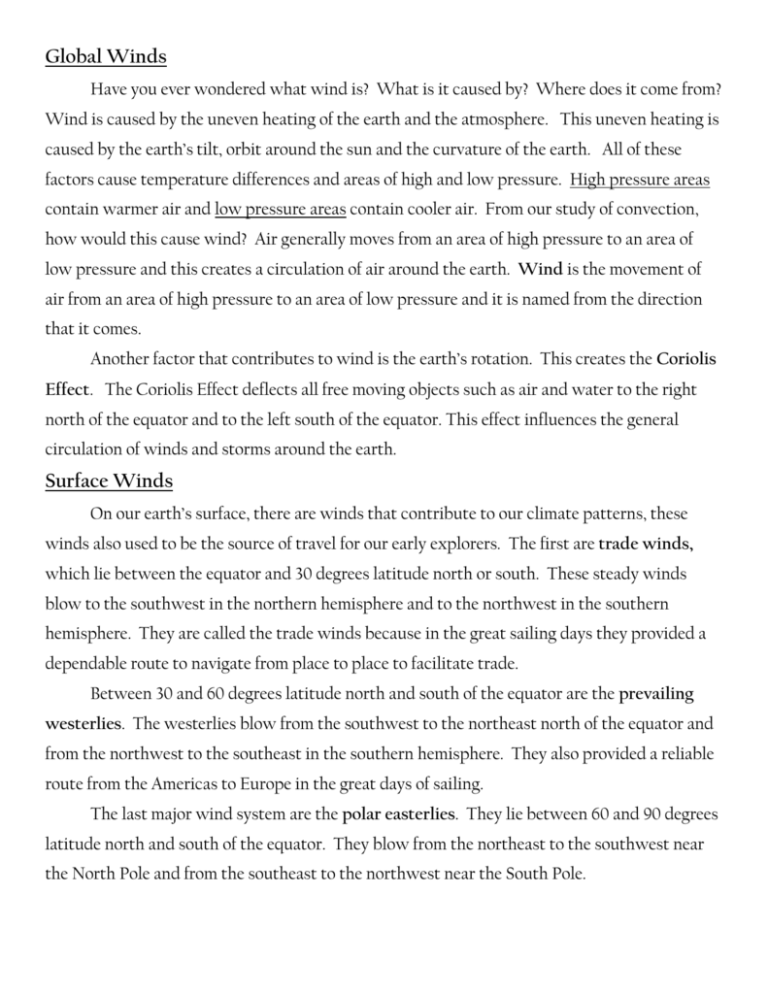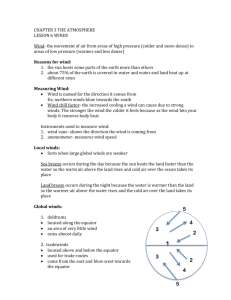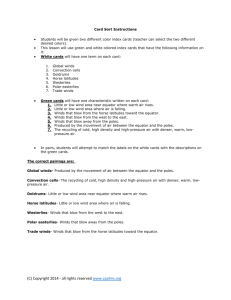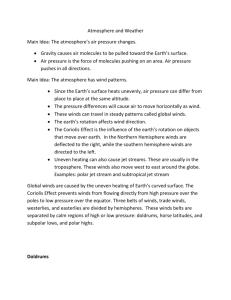File
advertisement

Global Winds Have you ever wondered what wind is? What is it caused by? Where does it come from? Wind is caused by the uneven heating of the earth and the atmosphere. This uneven heating is caused by the earth’s tilt, orbit around the sun and the curvature of the earth. All of these factors cause temperature differences and areas of high and low pressure. High pressure areas contain warmer air and low pressure areas contain cooler air. From our study of convection, how would this cause wind? Air generally moves from an area of high pressure to an area of low pressure and this creates a circulation of air around the earth. Wind is the movement of air from an area of high pressure to an area of low pressure and it is named from the direction that it comes. Another factor that contributes to wind is the earth’s rotation. This creates the Coriolis Effect. The Coriolis Effect deflects all free moving objects such as air and water to the right north of the equator and to the left south of the equator. This effect influences the general circulation of winds and storms around the earth. Surface Winds On our earth’s surface, there are winds that contribute to our climate patterns, these winds also used to be the source of travel for our early explorers. The first are trade winds, which lie between the equator and 30 degrees latitude north or south. These steady winds blow to the southwest in the northern hemisphere and to the northwest in the southern hemisphere. They are called the trade winds because in the great sailing days they provided a dependable route to navigate from place to place to facilitate trade. Between 30 and 60 degrees latitude north and south of the equator are the prevailing westerlies. The westerlies blow from the southwest to the northeast north of the equator and from the northwest to the southeast in the southern hemisphere. They also provided a reliable route from the Americas to Europe in the great days of sailing. The last major wind system are the polar easterlies. They lie between 60 and 90 degrees latitude north and south of the equator. They blow from the northeast to the southwest near the North Pole and from the southeast to the northwest near the South Pole. The doldrums are important but they are not really winds. This is a place at the equator in which the air rises but wind does not blow. It is the beginning of a huge convection current that contributes to the patterns of all of the other surface and planetary winds. By the way, if you were Columbus you would avoid the doldrums because sailboats would drift for days in the doldrums because winds would never fill their sails. The horse latitudes are similar to the doldrums and are located 30° north and south of the equator. These latitudes are characterized by calm winds and little precipitation. At these permanent high pressure areas air sinks instead of moving to the side, in other words air masses go down immediately surrounding the area, leaving a belt with no surface winds. Sinking, dry air causes a band of deserts to exist along the Horse Latitudes around the globe. They are named because sailors would get stuck there and would often have to dump their cargo to lighten the load.







